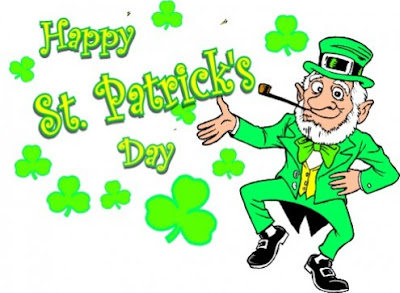Archive for March 2012
St. Patrick’s Day
Posted on: 17/03/2012
- In: Home
- Leave a Comment

Dear students,
Today the Irish people celebrate St. Patrick’s Day.
St. Patrick’s Day is celebrated on March 17, the saint’s religious feast day and the anniversary of his death in the fifth century. The Irish have observed this day as a religious holiday for over 1,000 years. On St. Patrick’s Day, which falls during the Christian season of Lent, Irish families would traditionally attend church in the morning and celebrate in the afternoon. Lenten prohibitions against the consumption of meat were waived and people would dance, drink and feast-on the traditional meal of Irish bacon and cabbage.
Corned beef and cabbage is a traditional St. Patrick’s Day dish. In 2009, roughly 26.1 billion pounds of beef and 2.3 billion pounds of cabbage were produced in the United States.
Irish soda bread gets its name and distinctive character from the use of baking soda rather than yeast as a leavening agent.
Lime green chrysanthemums are often requested for St. Patrick’s Day parades and celebrations.
If you want to know more about these traditions, go to this page:

Here are some Irish songs played in St. Patrick’s:
There are some symbols allied to St. Patrick’s Day:
The shamrock:

The shamrock, which was also called the “seamroy” by the Celts, was a sacred plant in ancient Ireland because it symbolized the rebirth of spring. By the seventeenth century, the shamrock had become a symbol of emerging Irish nationalism. As the English began to seize Irish land and make laws against the use of the Irish language and the practice of Catholicism, many Irish began to wear the shamrock as a symbol of their pride in their heritage and their displeasure with English rule.
The leprechauns:

The original Irish name for these figures of folklore is “lobaircin,” meaning “small-bodied fellow.”
Belief in leprechauns probably stems from Celtic belief in fairies, tiny men and women who could use their magical powers to serve good or evil. In Celtic folktales, leprechauns were cranky souls, responsible for mending the shoes of the other fairies. Though only minor figures in Celtic folklore, leprechauns were known for their trickery, which they often used to protect their much-fabled treasure.
Leprechauns had nothing to do with St. Patrick or the celebration of St. Patrick’s Day, a Catholic holy day. In 1959, Walt Disney released a film called Darby O’Gill & the Little People, which introduced America to a very different sort of leprechaun than the cantankerous little man of Irish folklore. This cheerful, friendly leprechaun is a purely American invention, but has quickly evolved into an easily recognizable symbol of both St. Patrick’s Day and Ireland in general.
Here is some vocabulary related to St. Patrick’s Day.
And an exercise
Enjoy!!! 😉